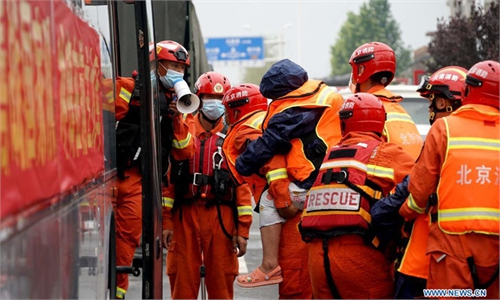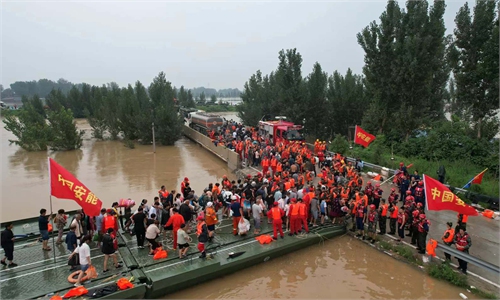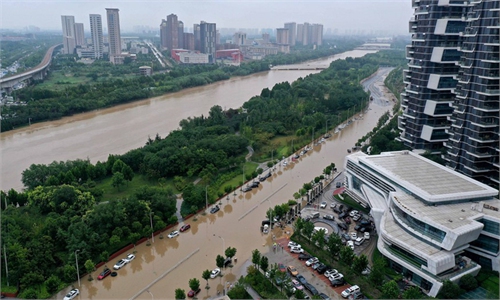Highly digitalized Chinese cities withstand test of rains, floods as telecom failures hamper rescue
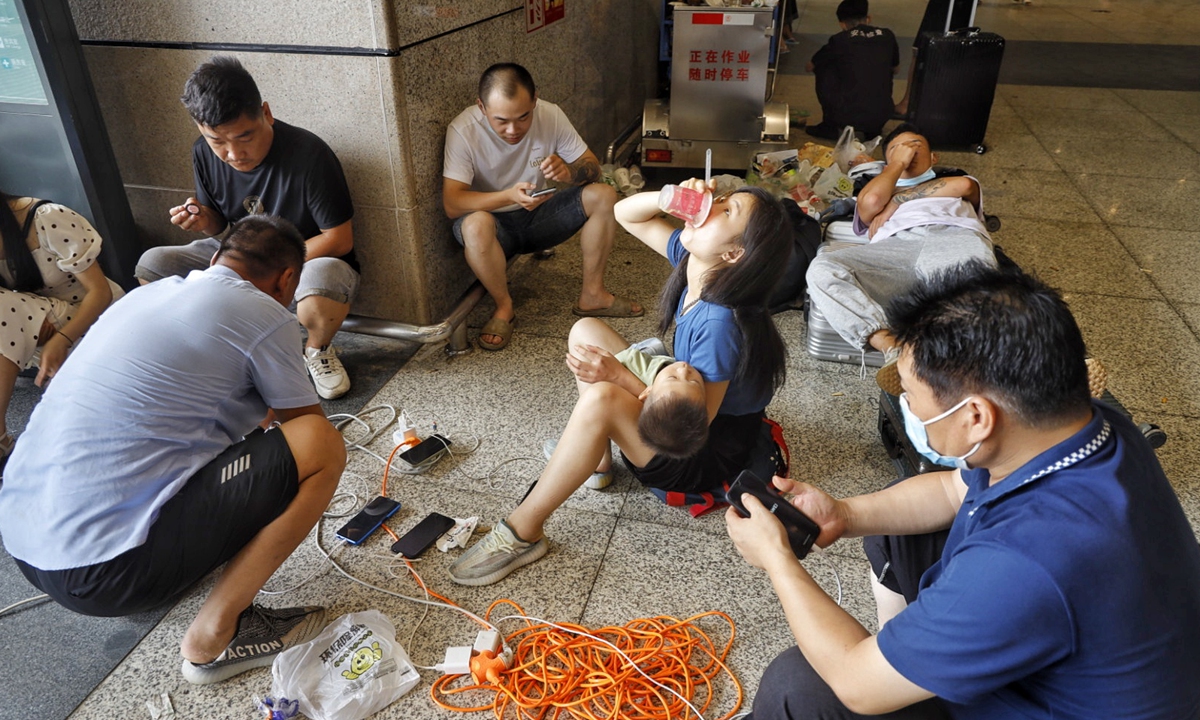
Passengers stuck at the Zhengzhou East Railway Station due to severe downpour sit in the waiting hall to recharge their phones. Photo: Li Hao/GT
It was an acute reminder of how hugely people's daily lives have been changed by, and dependent on the internet, and prompted experts to reexamine the fragility of technology in order to reinforce such infrastructure.
Daily precipitation in Zhengzhou from July 17-20 broke 60-year records, according to media reports, and nearly knocked the city's "radar" off.
The city devoted the largest amount of emergency repair resources in a race to restore communications as it battled the floods. Self-developed Chinese drones provided lifeline network services for flood-stranded residents.
In urban disaster prevention planning, "telecommunication infrastructures" are among important "lifeline projects" to which priority is attached, Wan Yanhua, a professor of urban planning at Huazhong University of Science and Technology, told the Global Times. Needs to restore telecommunication are normally urgent in a disaster as destroyed communications can amplify and spread public anxiety.
The physical network nodes - a connection point that can receive, create, store, or send data along various network routes - are relatively fragile against the attack of floods. Therefore, these "nodes" are usually set in areas with relatively high standards against floods in the urban planning stage, and the building materials used for physical nodes are very strong and durable, said Wan. At the same time, urban planning should include more backup systems to prepare for the replacement of the affected ones in times of crisis, Wan noted.
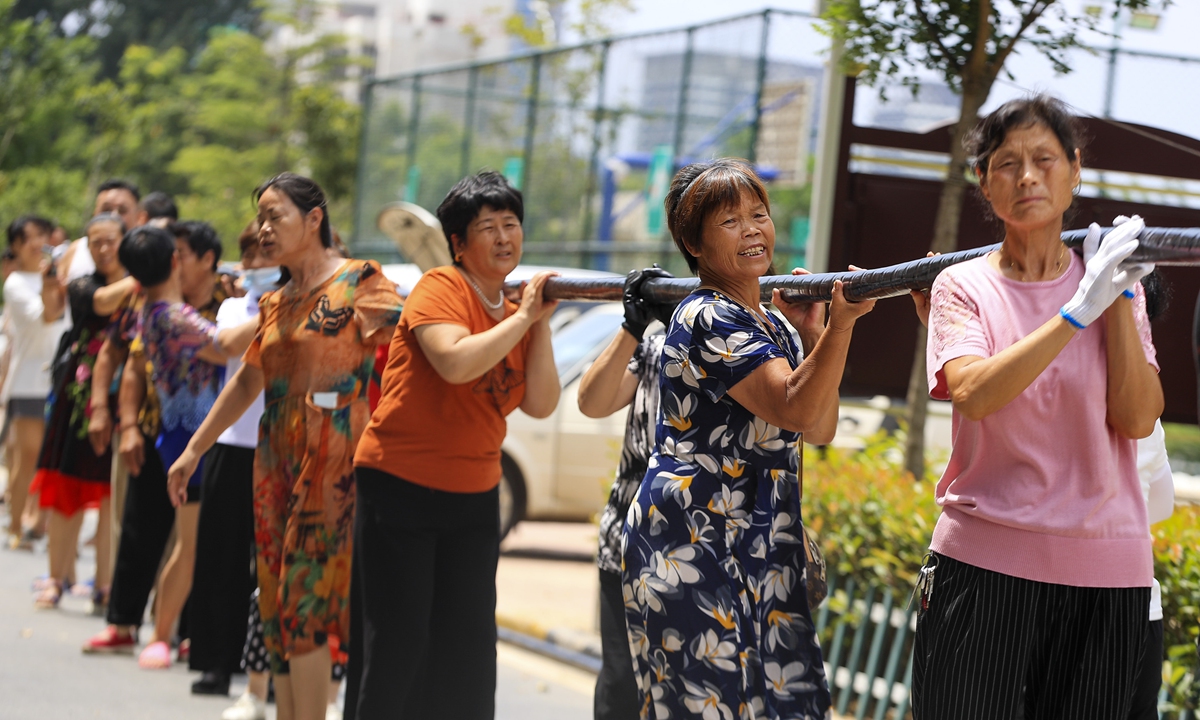
Local residents help carry electricity cables for repair in Zhengzhou, Henan Province, on July 27. Photo: IC
But Henan Province, an area more frequently hit by droughts, does not have as much experience in fighting floods as southern cities, and its plans may not be satisfactory. Even if there is a scientific emergency plan, whether it can be implemented in an accurate and standardized way remains to be investigated, Wan analyzed. He stressed that a well-coordinated government is needed for the situation. "For example, whether the major telecommunication operators and network providers can share resources and back each other during rescue stage, or whether the various departments involved in telecommunications services can support each other, they all test the wisdom of local governments."Flood-affected residents search for 'digital oasis'
The Global Times reporters started searching for a mobile phone signal just as they arrived in the seriously flooded city of Zhengzhou on July 21. Most of the time, the reporters struggled without any mobile signal or internet connection.
Many areas of Zhengzhou did not have electricity. Most of the shops along the street were closed and those who had some fresh products, like fish or milk, were selling at discount prices because they could not be refrigerated. Shopkeepers had to bring back spring scales they had not used for many years but many could not pay as cash has been out of Chinese daily life for a long time. Alipay and WeChat, the most popular online payment platforms, were inaccessible without signals. Many banks were closed because of power outages.
If you saw people crowd in a certain area along the street holding a phone, it certainly meant that was "a digital oasis" with 4G signal while the rest area was a "blackout desert."
Many young people were unaware of their dependence on signals and did not realize until that moment to what extent their daily life has been digitalized.
The Global Times learned that more than 80 percent of local taxis in Zhengzhou are electric vehicles but most of them were unable to operate normally because many energy banks along the streets were plunged in waist-deep water. Public transport was shut down due to safety concerns and the whole city was on the verge of a traffic paralysis.
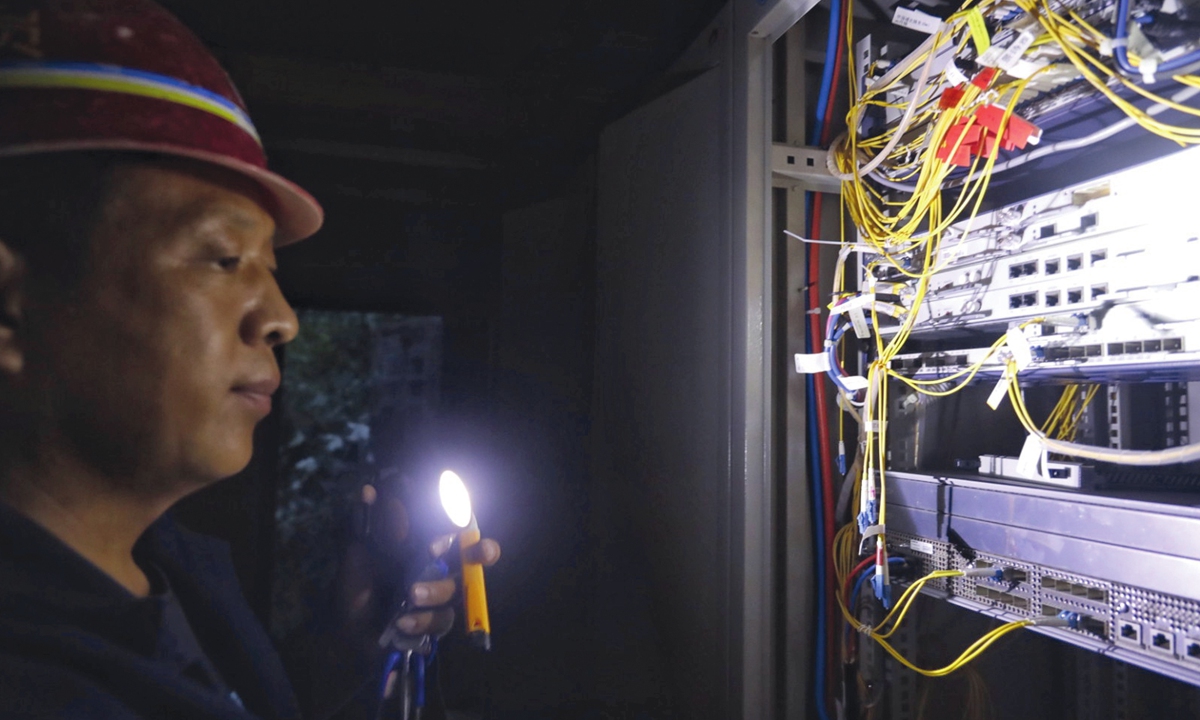
A worker scrambles to restore telecommunication stations in Anyang, Henan Province, which was hit by unprecedented floods. Photo: Li Hao/GT
There was also chaos at some intersections as drivers who rely on online maps became lost and many volunteered to pick up vulnerable people trapped in deep water.The digital breakdown also made rescue efforts more challenging in an unpredictable way. When the Global Times joined the nongovernmental organization "Endian" rescue team to attempt the rescue of more than 1,000 students trapped in a school for three nights without food and electricity, it took dozens of attempts to make a call to connect with the students.
Due to the inability to quickly pinpoint the specific location and situation of the trapped students through the internet and telecommunications, rescue workers had to send out two teams to evaluate the situation and then get back to headquarters to formulate the rescue plan. Their efficiency was largely dragged and the rescue timeline, which was supposed to take about five hours, prolonged to nearly 10 hours, the head of the rescue team surnamed Feng told the Global Times.
Military-use drones restore signals in emergency
According to data from the Electric Power of Henan shared with the Global Times, a total of 775,000 households in Zhengzhou were affected by the power outage caused by the record downpours.
After the disaster, the Electric Power of Henan quickly initiated the highest level of emergency response. The State Grid Corporation of China deployed more than 11,200 technicians, 358 emergency generators, and all kinds of power grid supplies and equipment from 25 provincial power companies were rushed to Zhengzhou overnight to assist post-disaster rescue works.
At least 61,900 telecommunications base stations were damaged by the heavy rains but most were back online quickly across the province. In total, at least 3,359 optical cables were damaged, with a length of 3,500 km.
Satellite communication vehicles and emergency communication vehicles were also distributed on some of the main roads in Zhengzhou to give temporary connection.
Networks were almost back to normal in only three days after it collapsed since July 21 in Zhengzhou. But neighboring cities and some rural areas suffered from prolonged cell tower damage and mobile power equipment scarcity.
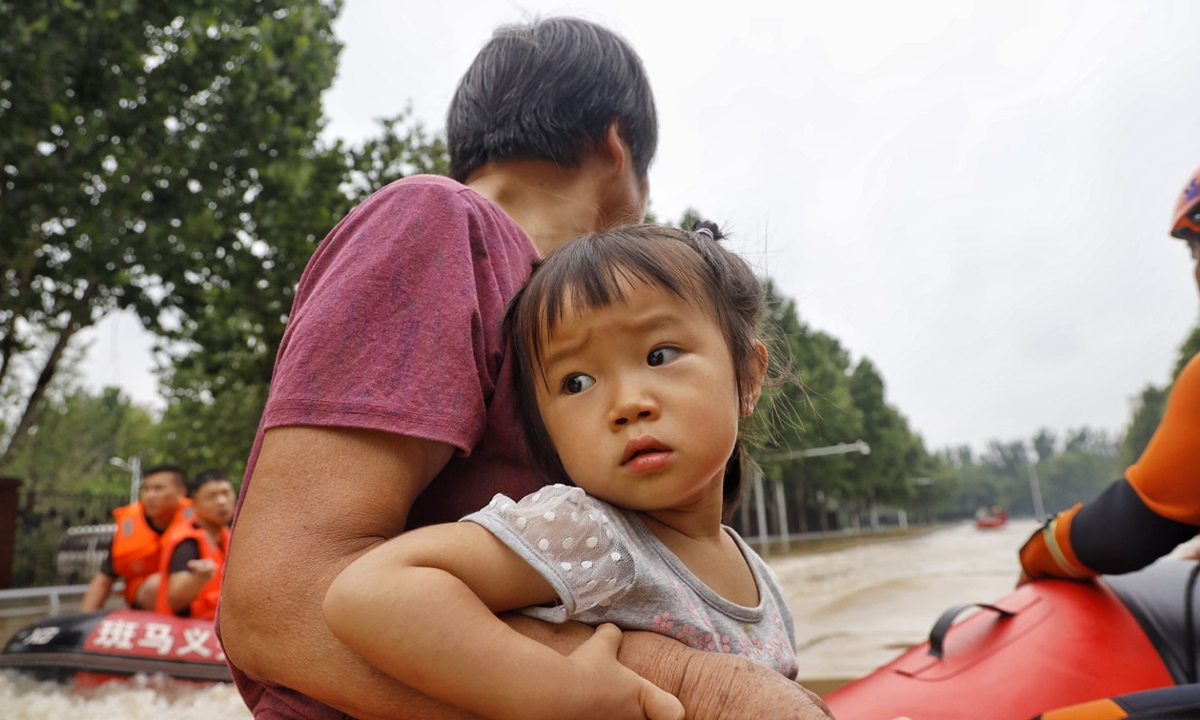
An elderly holds her grandchild who was rescued after being stuck in the floods for over 48 hours in Zhengzhou. Photo: Li Hao/GT
The shutdown of the telecommunication stations impacted operations of the meteorological bureau in Anyang, making it more difficult to provide weather information for disaster relief work. Crews used generators with a capacity of lasting at least five hours while work was underway to restore power supply.
The crew leader surnamed Gao told the Global Times that the breakdown of the communication network was mainly caused by power outage or equipment glitches due to the downpours.
However, some communication equipment was also shut down because of the risk of electric shock, Gao said.
Although the local communication stations already have measures in place to prevent flooding, like raised exterior walls to keep out water, the torrential rain that hit Henan was beyond its emergency response capacity.
The Wing Loong unmanned aerial vehicle also showed up to assist in Mihe county, Henan Province, and help local residents reconnect with each other. Thanks to the aid provided by the Chinese manufacturer of UAV, some units were dispatched to hover above the region.
Widely known as an armed reconnaissance drone for military purposes, the Wing Loong is also an ideal choice in civilian missions like disaster relief, serving as an aerial communications relay platform, experts said.
It is gratifying that more advanced drones and other smart tech have participated in network recovery in China's recent natural disasters, which has higher security and efficiency without obstacles, Wan said.
Four days after the rain, all base stations in Zhengzhou had been restored, except for some that were submerged in the water and communication services were back to normal.

